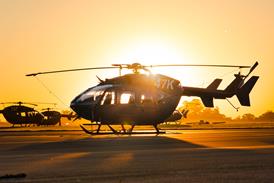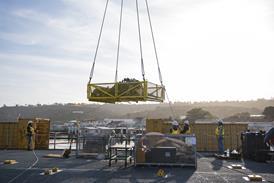Herman De Wulf/BRUSSELS
Sabena of Belgium has begun its transition to an all-Airbus fleet, and is coming to grips with new procedures
With the delivery of its first Airbus Industrie A321 on 2 March, Sabena began its conversion to an all-Airbus airline - the biggest re-equipment programme in its 75-year history.
Belgium's national airline is replacing 28 Boeing 737-200/300/400/500 short- and medium-haul aircraft with a total of 47 Airbuses by 2002. Sabena's Airbus fleet will include 34 members of the A319/A320/A321 family, nine A330s and four A340s.
The changeover brings different requirements for ground handling, flight operations, maintenance, servicing and airworthiness acceptance, and Sabena has formed three teams to rewrite its procedures.
Supervising the introduction of the A320 family of aircraft is Capt Patrick Van Dessel, vice-president for flight operations, who flies A330/A340s. He joined the airline in 1983 as a first officer on 737-200s.
"The A320 is not just a new aircraft," he says. "It's a new philosophy which is different from Boeing's. Computer-assisted fly-by-wire [FBW] technology is not new to Sabena. It was introduced with the A330 and the airline was a launching customer of the A340.
"But the concept is new to our pilots who have been flying short- and medium-haul routes on Boeing's 737 for three decades."
When Sabena decided in November 1997 to replace its Boeing 737s with the Airbus Industrie A320 family, its aim was to achieve maximum efficiency through fleet commonality with Swissair, which has a 49.5% interest in Sabena.
"Crew conversion was the first issue to be addressed," says Van Dessel. "Cabin crew conversion is done by Swissair. Pilots are a different matter. We'll have to train 320 in one year, putting a strain on simulator capacity. Cockpit commonality in Airbus aircraft is a major advantage, however, as there is hardly any difference between types.
"Because flying is done by computers, all the Airbus FBW types 'feel' alike when you fly them. We first trained our instructors at Aeroformation in Toulouse, doing in-flight training at Nîmes with Swissair.
"Sabena pilots then had one week of line training with Swissair. Since our own A320 flight simulator became operational on 15 February, all simulator training is done at Sabena's flight training centre at Steenokkerzeel.
"Pilots familiarise on flights to Malaga, an ideal training destination even if it means the aircraft has to stay overnight. We prefer it to Geneva, which as an atypical 'parachute approach' on the way down from 20,000ft [6,230m]." The first aircraft began revenue flights on 7 March, and more aircraft will join the fleet at a rate of one a month.
New destinations
Over the next year, Sabena's new Airbuses will take on destinations that include Gothenburg, Athens, Madrid, Munich, Lisbon, Dublin, Milan Linate, Manchester, Vienna, Palma de Majorca, Hamburg, Venice, Helsinki, Amsterdam and Lyon.
Introducing the new aircraft type called for ground handling procedures to be rewritten because Brussels Airport's B terminal was designed around the Boeing philosophy of loading baggage in aircraft holds manually. On the A320, baggage is containerised. Separate containers hold bags for local flights, for those making connecting flights and for those marked for priority.
"This moves the action away from the tarmac and into the basement of the terminal," says Van Dessel. "We may want to augment the number of chutes per flight, and we'll need containers and trolleys and scissor lifts. Delivery of this equipment has to keep ahead of aircraft delivery.
"All has been carefully planned, but problems may initially arise at outstations. But any early baggage problems will eventually be solved when the new A terminal is ready - the airport authority has given the green light for it. It will be tailored to the needs of containerised baggage handling."
One other difference with A320 operations is that the aircraft have a greater wingspan than the Boeing 737, says Van Dessel. That means there will be less space at the gates for vehicles to move about because the A320 requires more ground equipment.
"However, the A319 is shorter than the A320 and the A321. This demands careful operating of the jetways since there is less space between the forward cabin door and the engines. Another aspect is that an A319's wings do not fit over the fuel outlets of Brussels Airport's underground fuel pipe system outlets. It will take training and planning to manoeuvre an A319 to the right spot for it to be refuelled."
The introduction of any new aircraft type also means considerable paperwork. And even more when 34 individual aircraft each need airworthiness certificates from Belgium's Civil Aviation Administration. A special acceptance team has been formed to handle that aspect of the transition.
"Each aircraft has to be proved to be Category III capable," says Van Dessel. "When you realise that our second aircraft arrives on a Wednesday and is to fly to Athens with a full load of 188 passengers on Sunday, taking into account that civil servants do not work on weekends, this means all the paperwork has to be done in three days. We cannot afford any delay."
Source: Flight International























